15 Ways to Get Even Fitter
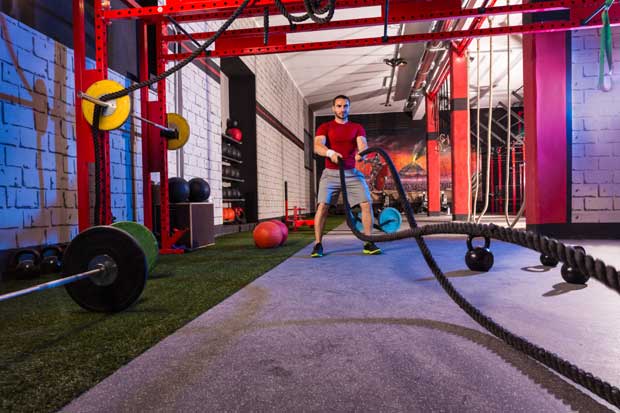
Uncovering some of the best methods to become awesome all over in the new year.
As runners, we have a head-start in the race to fitness and health. We’re often the ones who bound up the stairs next to a crowded escalator. Still, the path toward the fitness level we want to achieve is littered with discarded ideas and crumpled-up training plans. No matter our current state of fitness, there’s always a quest for more.
For the new year, here are 15 novel ideas to become a more well-rounded runner or, better yet, athlete.
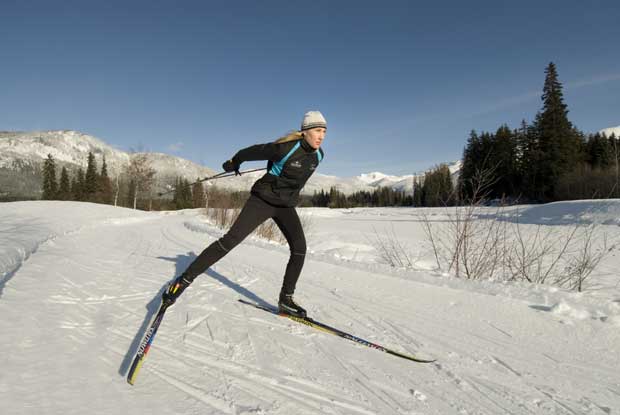
1. Channel Your Inner Donovan Bailey
When distance runners talk about sprints, they’re often referring to short accelerations at a brisk pace. Real sprinters
would call that a warm-up. Sprinters’ sprints are full-out efforts – and potentially hugely beneficial for long-distance runners, according to Chris Lemassif, a sprints coach with MyRemoteCoach.com.
“With speed training,” Lemassif says, “runners’ bodies learn to remove byproducts from muscles and produce more energy, for
a longer time.”
Researchers at McMaster University in Hamilton, Ont. found that after just six sessions of sprint training over two weeks, subjects nearly doubled their performance in a run to exhaustion, to an average of 51 minutes from 26 minutes. The improvements came from increased muscular efficiency, energy production and energy usage – not from cardiovascular improvements, as is the case with traditional aerobic endurance training.
Lemassif says runners should incorporate sprint training gradually into their aerobic program, to avoid getting hurt. A good starter workout would be: 4 x f lying 30m sprints, running each as fast as possible, with 3 minutes rest between intervals.
2. Virtual Reality, Real Workout
A Kickstarter campaign last fall raised hundreds of thousands of dollars for a multi-directional virtual reality treadmill called the Cyberith Virtualizer that rotates 360 degrees and works in conjunction with immersive video games. The system would allow the user to run around in a virtual world. That machine won’t be in wide commercial distribution for a while, but there are still other more accessible ways runners can really amp up their fitness level with a virtual-reality-like experience.
Some gyms in Canada are equipped with treadmills that have pre-programmed courses, such as the Matrix treadmill’s Virtual Active system, which is equipped with a console display that automatically tilts and lowers the incline to simulated runs
across the Grand Canyon or through the Rockies.
 3. Let’s Get Critical
3. Let’s Get Critical
If you like your research fresh, University of Toronto PhD candidate Ming Tsai’s thesis on critical power already has some promising real-world applications for runners. Tsai has developed a new way to measure an athlete’s fitness level by measuring their anaerobic and aerobic energy systems in one, all-out 3-minute test. The traditional method is time-consuming
and requires several exhaustive tests. Tsai’s new 3-minute protocol can estimate the anaerobic and aerobic parameters accurately in a single test. By knowing these two parameters, you can predict performances, prescribe accurate interval workout intensity, set training zones and design pacing strategies.
“In running, it is difficult to measure power output and so speed is used instead,” Tsai says. “The anaerobic component is said to be fixed in capacity – think of it as a fuel tank – and the aerobic component is the maximum aerobic speed, which you could keep up for 30 to 40 minutes.”
If you want to try the 3-minute all-out test yourself, it’s best to do it on a track and take time splits every 25m, or use a gps watch and record every second. Start at 100m sprint effort and continue to maintain that maximal effort for 3 minutes. Your critical speed is the average speed of the last 30 seconds and the anaerobic measure is the area under the curve above critical speed.
4. Yeah, Yeah, Yeah, Do the Lactate Shuttle
Former Olympian Paul Osland discovered that he was doing lactate shuttle workouts without even realizing it. “Years ago when I started training for road races, I would often do workouts on the treadmill, because I do not like the cold and I get injuries when I run in the snow. When I first started doing regular interval workouts I could not find a treadmill that would go fast enough for me,” says Osland, who competed in the 1998 Olympics in the 800m and 4 x 400m.
Osland wanted to run very quick 800m repeats with a slow 400m rest, but to compromise for the slower treadmill speed, he instead ran a slightly slower 800m repeat and a faster 400m rest. “At first, this was very hard for me as I was so used to
a complete rest between intervals,” Osland says. “But after a few workouts like this, I found that my recovery was getting
much better and the workouts became much easier.”
He later learned the science behind these lactate shuttle workouts. The concept is that when runners work out at a fast pace, their bodies start to produce lactate, which is used for fuel, but after a certain build-up point it becomes uncomfortable and ultimately causes the muscles to stop working. “The more we train this system, the better our bodies become at converting
the lactate into energy, and the longer we can run at a faster pace before our muscles shut down,” Osland says.
 5. Cross -Country Skiing, For the Win
5. Cross -Country Skiing, For the Win
As Canadian Running’s Alex Hutchinson has reported, cross-country skiing offers astounding cardiovascular benefits. A study out of Sweden on octogenarian men showed that the group who followed a regular regimen of cross-country skiing had twice a level of cardiovascular fitness as the group who only performed regular daily activities. The upper- and lower-body activation in cross-country skiing offers a complete workout, and is perfect outdoor cross-training for the Canadian winter. Another advantage: it’ll probably make running feel quite a bit easier.
6. Follow -Along Fitness
The downside to follow-along fitness programs is they carry a risk of embarrassment as you jump around in your living room. But there are plenty of upsides to the wide range of fitness dvds and interactive games now available. And the good news for the time-crunched is that these programs are getting shorter and more focused. The ever-popular P90X dvd series recently launched a new program, P90X3, that involves 30-minute workouts rather than the hour-and-a-half-long sufferfests in the original P90X. Another dvd workout series, Focus T25, claims to get you “an hour’s worth of results in just 25 minutes.” As much as you may laugh at the cheesy delivery by the hosts of these programs, they can help you get in some serious workouts, with minimal equipment, without leaving your home. Or if you really want to get embarrassed, just do a half-hour of Just Dance 2015 on the Wii, Xbox or PlayStation.
 7. Do You Even Lift?
7. Do You Even Lift?
You’ve probably read about strength training routines designed for runners, but how’s this for a change – try out a traditional strength training program to build some muscle. If you want to become a more well-rounded athlete, you’ll need to
lift yourself out of your comfort zone, and a great way to do that is by hauling some iron. Several studies have shown that weight training can help you lean out and gain muscle without slowing down your running performance, so it’s a win-win situation.
8. The Weight
One of the biggest fitness trends for 2015 is also one of the most convenient – you can do bodyweight training anywhere (although we wouldn’t recommend it in the middle of a company meeting at the office). You can get a surprisingly intense workout in just by using the gravitational pull of your own body mass. And if you have access to some playground equipment, such as monkey bars, all the better. Al Kavadlo, a bodyweight training guru and author of Raising the Bar, argues that you get in the best shape of your life with only a pull-up bar.
 9. Rope Yourself In
9. Rope Yourself In
More gyms are starting to carry battle ropes, those intimidating-looking cords that are meant to be shaken around in snakelike patterns like kids used to do with jump ropes on the playground. These thick ropes look like they’re meant to moor an ocean liner, and because of their heft, battle ropes offer an intense workout in a matter of minutes. “Battle rope training is basically short bursts of brutality,” says Kirstyn Brown, editor-in-chief of Strong Fitness Magazine. “When you really give it your all, 30 seconds with the ropes can feel like a lifetime. But I think that’s partly why people love them.” People tend to think battle rope training requires insanely strong arms and shoulders, but that’s a myth, Brown says, adding, “You actually feel like your lungs are going to explode way before your arms give out.”
10. Solve Your Health Puzzle
“The first step to putting together a complex puzzle is finding the pieces, and the same applies to getting in shape,” says Aric Sudicky, a Calgary-based trainer who was named CanFitPro fitness professional of the year in 2011. “There is no quick fix when it comes to optimizing your health, and the first step is identifying the many factors that inf luence your health.”
It’s also critical to find your reason for wanting get fitter. Why do you want to park five blocks further from work? How will you motivate yourself to prepare five lunches every Sunday night? “Most importantly,” Sudicky says, “how will you find pleasure in the benefits of a healthy lifestyle?” Once you have assembled the puzzle pieces for your fitness goals, Sudicky says, it’s just a matter if choosing the exercises that work for you.
 11. Yoga for Jocks
11. Yoga for Jocks
Many runners have already embraced yoga as a complement to their training, and those who haven’t are probably sick of hearing about it, but the discipline is evolving with a crop of new yoga programs that cater specifically to athletes. Canadian Jana
Webb developed Joga by Jana because she felt traditional yoga’s mostly static holds left athletes too “flat.” Her program mirrors the cadence of sports movements. “Joga breathing integrates core activation with movement,” says Webb, who even suggests runners use her techniques on the run. “While running, focus on lifting the pelvic floor – think holding your pee – on every inhale, and drawing the navel toward the spine on every exhale. This will improve pace, endurance and recovery.”
In a similar vein, another Canadian-based program, Michael DeCorte’s Jock Yoga, puts the focus on strength and endurance rather than stretching and flexibility. “Most runners would likely assume that the benefits of athletic yoga stem solely from fascial stretching and the opening of athletic muscles” DeCorte says. “This is, of course, one major benefit, but that aside, the strength and endurance focus in Jock Yoga can also prime runners for their personal best.” The program incorporates long holds and repetitive movements while maintaining proper structural alignment, which strengthens and primes the joints and stabilizing muscles for impact and endurance. “Additionally, a good butt-kicking in a Jock Yoga class can get your mind ready to persevere in distance or speed during your race,” DeCorte says. He used his own techniques of pain management during a marathon in which he qualified for Boston.
12. Replenish Your Fluids (In Your Joints, That Is)
Dr. Chris Oswald, one of Canada’s top chiropractors and founder of MuscleCare, says runners can step up their game by taking better care of the joints, which take a major pounding during running. Studies continue to show that running strengthens joints in the long term, but Oswald points out that the high-impact forces of running result in forces of up to six times a person’s body weight pounding through the joint system, so they need a proper recovery.
“Since joints are mainly made up of cartilage, which is mostly fluid, this fluid is forced out with each step,” Oswald says. To get the fluid back into your joint, Oswald recommends staying well-hydrated, sleeping and sitting with a proper posture, drinking less alcohol, using relaxation and deep breathing exercises and cross-training with low-impact exercises like cycling and swimming.
 13. The Non-Diet Diet
13. The Non-Diet Diet
Frustrated by the preponderance of fad diet books on the market, Dr. Yoni Freedhoff, founder of the Ottawa-based non-surgical Bariatric Medical Institute, wrote The Diet Fix, a book that explains how to have a good diet without going on a diet. For runners, Freedhoff has a simple message: don’t shoot for perfection.
“The world of nutrition is awash in minutia,” Freedhoff says. “The media, diet book gurus, health professionals, friends and family all seem to be pushing the message that our diets must be perfect, and that the eating grade we should be aiming for is an A+. When it comes to healthful living, I think an A+ is an awful grade. Just as with school, the effort required to get an A+ is orders of magnitude more than what’s required to get a solid B, and frankly, as far as the evidence goes, it’s unclear, especially when it comes to folks who are already regularly physically active, that the A+ will translate to tangible life-extending or improving benefit over that B.”
14. Celebrate Food
It’s a mistake to approach food solely as fuel, or you’ll deny yourself the joys of food as a comfort or celebration, instead turning it into something to be tolerated, says Dr. Yoni Freedhoff, whose popular blog, Weighty Matters, dispels myths about
obesity. “When it comes to food,” Freedhoff argues, “merely tolerable, for most of us, isn’t good enough, and consequently doesn’t last.” So stick to the basics and cook most of your meals from fresh, whole ingredients, and try to eat those meals with your family around a table. “Remember that the simple fact it’s Friday doesn’t warrant an automated meal out, don’t drink any calories you don’t love, and aim for the smallest amount of dietary vices and indulgences you need to like your life.”
15. Spend More Time in the Kitchen
It may sound counterintuitive coming from a fitness model and personal trainer, but Aric Sudicky, a top personal trainer who is also a medical student at the University of Calgary, says runners who want to improve their fitness and health should spend less time in the gym and more time in the kitchen. “Obesity has surpassed smoking as the biggest cause of premature and preventable death and is linked to 25 to 30 per cent of cancers,” Sudicky says. “When I meet with a new client or patient who is strapped for time, the first step is to help them develop new eating habits.”
Research has shown that exercise can help you maintain your weight, but is not as effective as dietary changes when it comes to weight loss. “You cannot out-exercise poor nutrition,” Sudicky says. “If faced with an exercise- or prepare-food-dilemma on a busy day, head into the kitchen and prepare five or six lunches for your upcoming work week.”
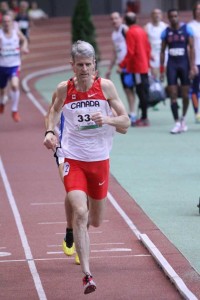 3. Let’s Get Critical
3. Let’s Get Critical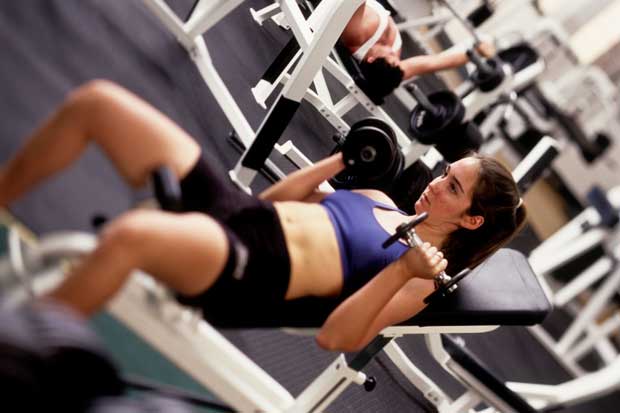 5. Cross -Country Skiing, For the Win
5. Cross -Country Skiing, For the Win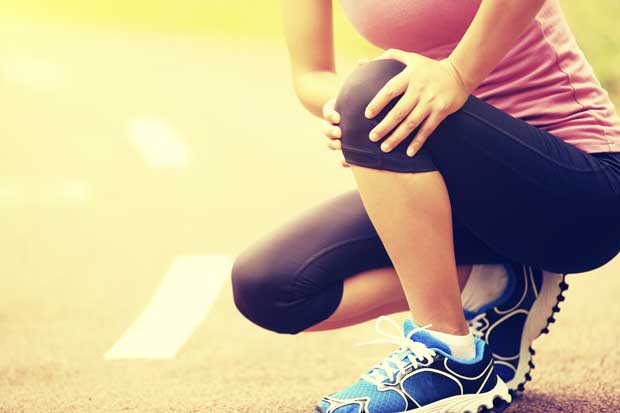 9. Rope Yourself In
9. Rope Yourself In 11. Yoga for Jocks
11. Yoga for Jocks 13. The Non-Diet Diet
13. The Non-Diet Diet

